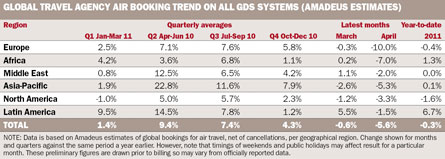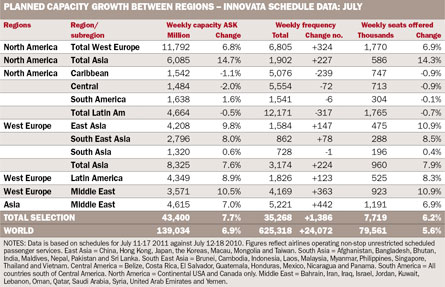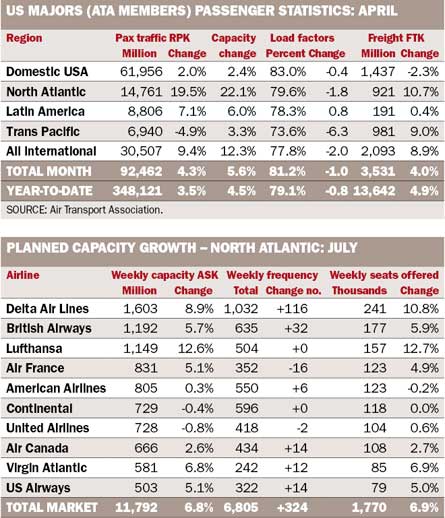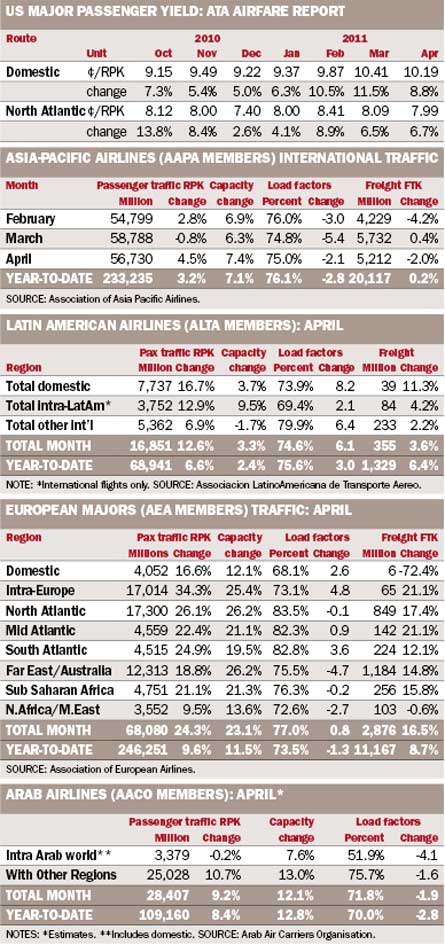Any regular readers in recent months might detect that we were not surprised by the latest reduction in IATA's expectations for the 2011 outcome, which was announced at its recent annual general meeting in Sinagpore. In the new forecast IATA cut the operating profit outlook from $18.4 billion to $11.7 billion compared with an expected outcome of $30.2 billion in 2010.
While we fear that "downside risk" still remains, particularly on the revenue side of the profit equation, there appear to be some marked differences between 2008, the last time we saw a significant and prolonged increase in the fuel price, and 2011.
Not least is the evidence that we have seen in respect of capacity reduction announcements. There are also signs that aircraft utilisation has fallen back and where the cost of the resulting inefficiency is far less of a problem than a combination of lower revenues and an inability to cover the variable costs associated with the flight. As a result, by not operating the flight the losses are lower than if it was flown.

Although attention has begun to focus on whether what we are seeing now is a shortening of the so-called aviation cycle, the reality is more a case that we are still in a period of fragile recovery, and the industry has been hit by another "event-related disturbance" - namely the fuel price.
While 2010 was a record year in terms of industry profitability, it was in fact a year when there was a coincidence of particularly favourable circumstances: not least rigorous capacity control, a manageable fuel price and a sharp recovery in business traffic.
Towards the end of 2010 there were some concerns about capacity growth from deliveries, and increased utilisation.
ECONOMY IS THE THREAT
While the fuel price rise is damaging, may get worse and is only partly reversible through higher fares, the threat beyond this is to revenue against a background of still weak economies.

And the announcement by Qantas to defer and cancel aircraft deliveries is a reflection of a more challenging outlook for them over more than just the immediate period. Pressure on revenues is not confined to a particular region or airline model.
Incoming IATA director general Tony Tyler notes that the need of the airline industry is "to keep revenues ahead of costs" - a simple statement of what is best described as a necessary condition for survival if not prosperity. The most important area of interest is a comparison of the changes in costs and revenues that have occurred. At present, the key issue is the extent of the success achieved in ameliorating the effects of the step up in fuel costs by increasing revenue.

Against this background it is interesting to look at the latest results announcements to see where this necessary state is in evidence - and in the sample of airlines we selected, the increase in costs for many was significantly greater than that in revenues, and it did not seem to matter whether they were a low-cost airline or not. For many low-cost carriers, the combination of a revenue and fuel cost squeeze could be particularly damaging.
Faced with higher fuel costs, the actions available range from raising fares at one end of the spectrum to cutting capacity at the other. Overall, while fares have continued to increase during 2011 we are now beginning to see a fall-off in passenger numbers in the economy cabins, with the latest IATA numbers suggesting a 3.5% fall since the start of the year.

Even in 2008 when the economy was still relatively strong, airlines were unable to recover the full amount of higher fuel costs, with some estimates that the recovery of the fuel price increase was 50-60%.
Now, as indeed then, attention has focused on the extent of the supply side adjustment and in particular reducing capacity; if anything this is occurring relatively early on this time around.

The simplest conclusion is perhaps that while the outlook of high fuel and the prospect of weakening revenue is if anything almost depressingly familiar. The responses are well tested and tried and that yet again it will be a bumpy ride to the next peak rather than a straighter line. But in reality perhaps few expected it to be any different in an industry where the need is to plan for the worst but hope for the best.
Source: Airline Business



















